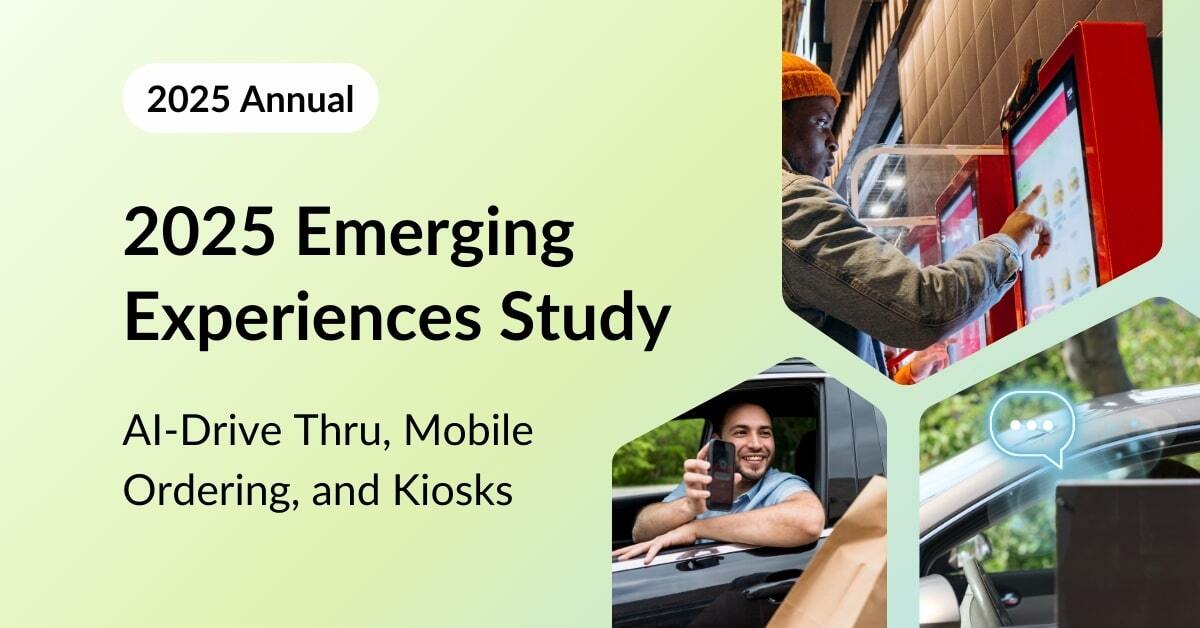Hidden Insights: The Blind Spots in QSR Mobile Order Pickups
Let’s be real. QSR Mobile ordering isn’t the future. It’s already the now. Guests expect it. Operators rely on it. And for some brands, it’s the MVP...

Customer preferences have certainly evolved over the last decade. From technological advancements to economic shifts, many factors influence what customers want from brands today.
Although brands can use multiple research methods to understand their market, customers, and competition, traditional market research methods may not always capture the complex details of customer experiences.
This is where mystery shopping comes in as an invaluable tool. By acting as real customers, mystery shoppers provide reliable, timely, and actionable feedback on different touchpoints throughout the customer journey.
But what type of data do these undercover shoppers collect? And how can this information lead to strategic decisions and business growth?
In this blog, we'll take a deep dive into mystery shopping as a research tool and explore its potential for leveraging business intelligence.
Ready?
Mystery Shopping is a powerful research methodology that offers a unique lens into consumer interactions. It helps brands collect insights into operations and customer experiences in a way that other research methodologies may overlook.
One key advantage of mystery shopping is its ability to gather primary data straight from the source: the customers themselves. By engaging shoppers in real interactions, brands gain firsthand insights into the nuances of customers' experiences at multiple locations.
According to a study by the Mystery Shopping Providers Association (MSPA), 78% of businesses utilize mystery shopping to gather direct feedback from customers, highlighting its effectiveness as a primary data collection method.
From the moment they step through the door to their interactions with staff, mystery shoppers evaluate every detail, free from external influences.
This unique perspective enables brands to gain genuine feedback, allowing them to make informed decisions about serving their customers better.
From measuring customer wait times to evaluating staff friendliness, mystery shopping provides quantitative and qualitative data on customers’ interactions.
Research indicates integrating qualitative and quantitative data leads to more comprehensive business insights. With that in mind, brands can:
Quantitative data from mystery shopping provides an objective understanding of the customer experience and operational performance and is typically what people think of when considering mystery shopping. These data points are often utilized to monitor performance, identify trends, and measure adherence to specific standards or benchmarks.
With access to objective data, decision-makers can delve deeper and pinpoint areas in the operations that are hindering customer experience and satisfaction.
For instance, if product quality has been consistently evaluated as ‘low,’ what are the key reasons behind it? Is a supply chain issue affecting product quality, or is a lack of employee handling training impacting the quality of the product delivered?
Store Safety: Evaluates whether the protocols implemented by brands to ensure the well-being and security of customers, employees, and assets are in place. This includes wet floor signs and safety barriers around potentially hazardous areas, for example.
These are the most effective methods for brands to design their questionnaires when collecting quantitative data with mystery shopping:
Closed-ended questions: These are the ones where brands give specific options, like 'yes' or 'no' questions. They are great for getting quantitative feedback since they keep the results within the parameters evaluated by the brand.
Qualitative data in mystery shopping offers subjective insights that provide a more detailed understanding of customer experiences.
Unlike quantitative data, which is based on numbers and metrics, qualitative data provides a context-rich evaluation that sheds light on the details of the customer experience.
This type of data is very useful for brands, as it allows them to identify the value that customers place on specific interactions and touchpoints. Additionally, it can be used to improve employee training and anticipate trends in customer behavior, giving companies a real competitive edge.
Curious about how Mystery Shopping can help brands collect quantitative and qualitative data across different industries? Click here to learn more.
Here are the most popular methods that brands can use to effectively design their questionnaires when collecting qualitative data with mystery shopping:
Quantitative metrics provide valuable data points, but they may not offer the context that qualitative observations can provide. When businesses combine both types of data, they can gain a more comprehensive understanding of their operations and the impact on customer experiences.
Qualitative data provides deeper insights into the root causes of operational inefficiencies, enabling brands to get a full picture of what is happening on a day-to-day basis in the field.
Let’s consider the restaurant industry as an example. Our 2023 Drive-Thru Study highlighted the impact of food temperature on food quality. According to it, ‘Food Quality’ was 35% higher when the food was received hot.
Based on shoppers’ comments, decision- makers can dig deeper into considerations like:
Blending qualitative insights and quantitative data in mystery shopping enables businesses to gain a comprehensive understanding of operational efficiency and its impact on customer experiences and business growth.
By leveraging both types of data, brands can embark on a journey of continuous improvement, brand consistency, operational efficiency, and exceptional customer experience.
Need help gathering valuable insights about your customers' experiences across multiple locations? 

Let’s be real. QSR Mobile ordering isn’t the future. It’s already the now. Guests expect it. Operators rely on it. And for some brands, it’s the MVP...

Drive-thrus are talking back.Kiosks are taking orders.And mobile apps? They’re doing everything except handing you your fries.

“Heads up, AI is giving us a hand today” reads the label on the drive-thru speaker. Does that make you feel confident, or uncomfortable? Afterall, it...